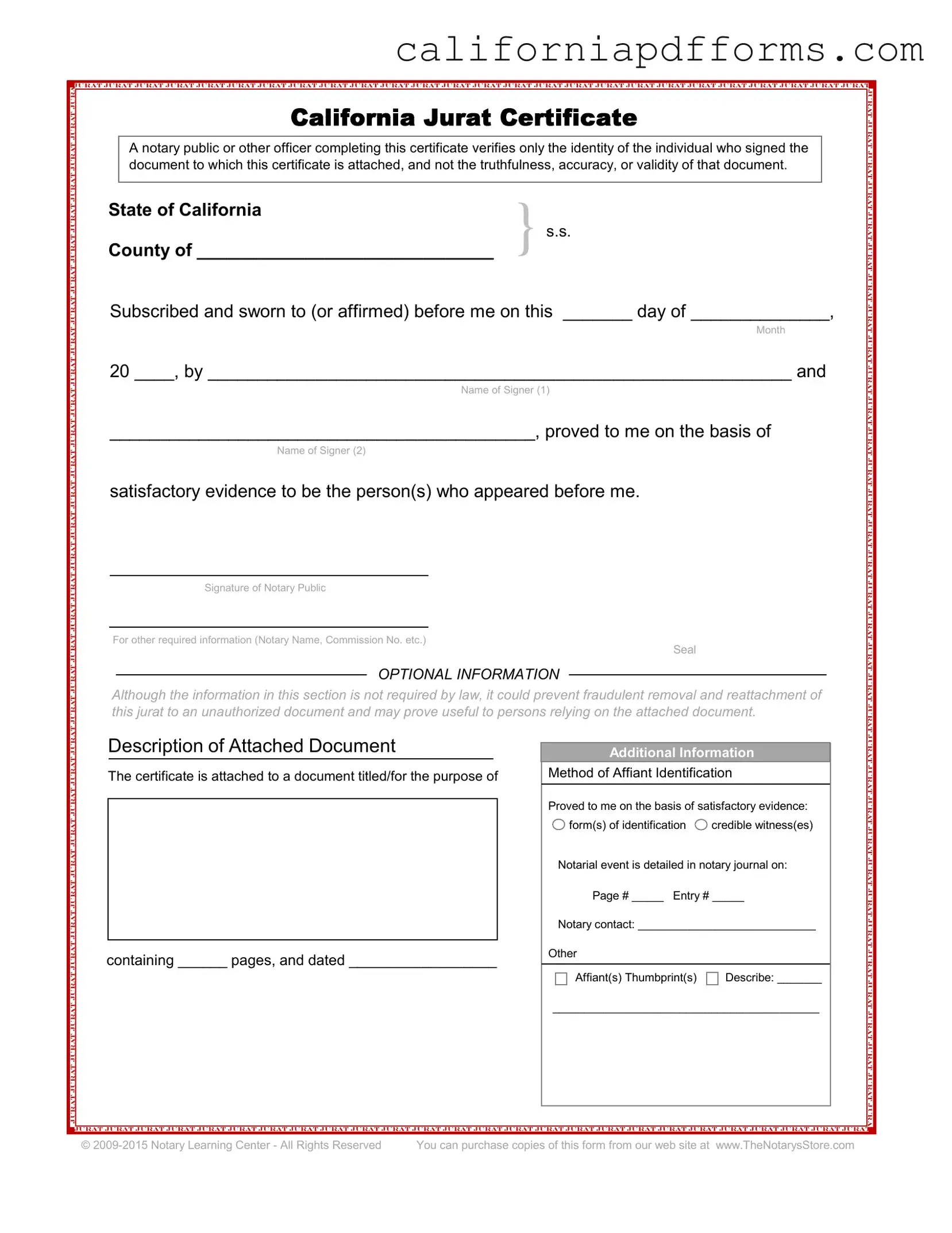The California Jurat form is a legal document used to verify that an individual has sworn or affirmed the truthfulness of the information contained in a document. This form is typically used in conjunction with affidavits or depositions, where a notary public witnesses the signing of the document. The notary then completes the jurat by signing and sealing it, thereby affirming that the individual has taken an oath to the truth of the statements made.
A Jurat form is required when a document needs to be notarized and the signer must declare that the information provided is true. This is common in various legal proceedings, such as court cases, property transactions, and other situations where sworn statements are necessary. It is important to ensure that the document clearly indicates the need for a jurat rather than just a simple acknowledgment.
To complete a California Jurat form, follow these steps:
-
Ensure that the signer is present and ready to take an oath or affirmation.
-
Have the signer read the document carefully to confirm its accuracy.
-
Once the signer is ready, the notary public will administer the oath or affirmation.
-
The notary will then complete the jurat section, which includes the date, the notary's signature, and the notary seal.
It is crucial that the notary verifies the identity of the signer before proceeding with the notarization.
If your Jurat form is rejected, first seek to understand the reason for the rejection. Common issues may include:
-
Missing signatures or dates
-
Inaccurate information provided by the signer
-
Failure to properly administer the oath
Once you identify the issue, you can take corrective action. This may involve re-signing the document in the presence of a notary or providing additional information as needed. If you are unsure about the process, consider consulting with a legal professional for guidance.
